We first got a look at the new SLED from DMR Bikes earlier this year at Core Bike, but now we’ve got one in the house for a proper thrash. As many of you would know, the SLED is a brand new full suspension bike from DMR. Of course DMR is no stranger to full suspension, having offered the steel-framed BOLT for some time now, but the UK-based brand wanted to build a more versatile purpose-built long travel all mountain bike to expand its offerings.
And that’s where the new SLED comes in.
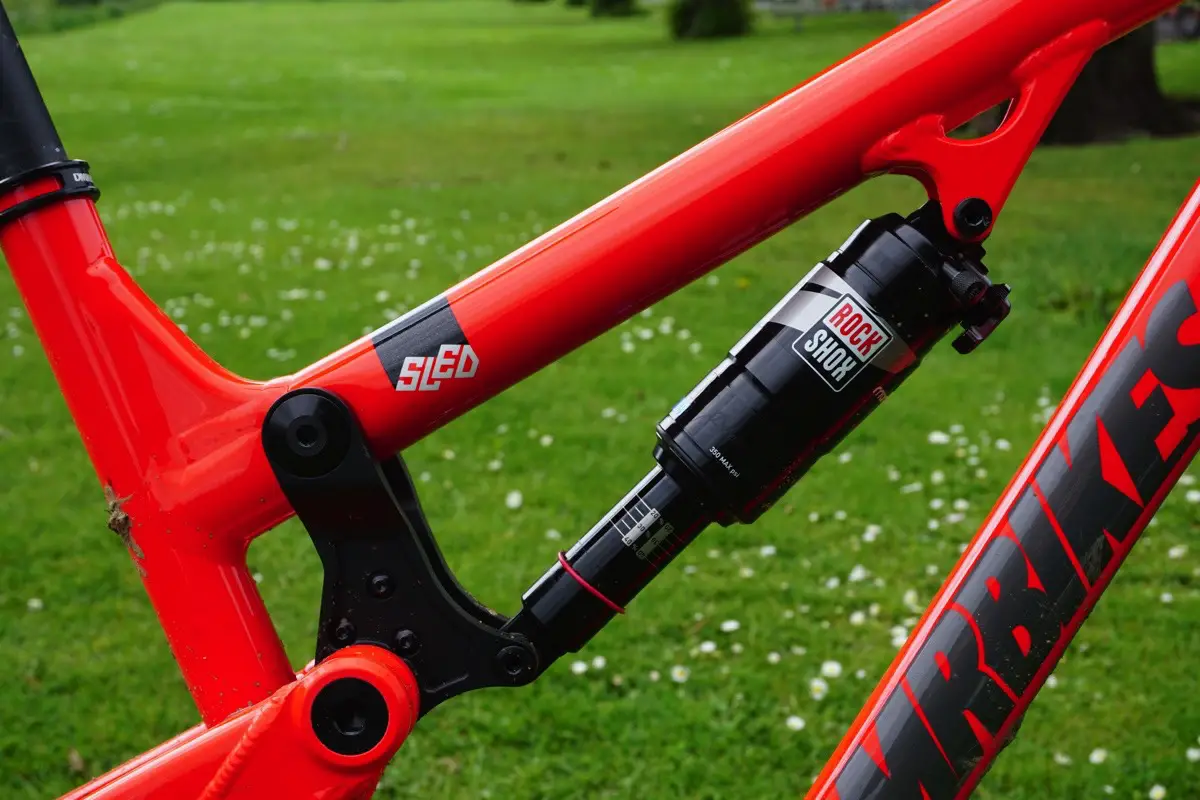
“Angles which beg to descend and full suspension that’s happy to climb. Durability which gives confidence on the biggest of hucks with a weight that will allow the most epic of adventures. The SLED captures the very essence of what Mountain biking is for us at DMR. Put simply the SLED is our summary of MTB. It’s our tool for extracting fun out of every turn, speed from every feature, and laughter from every trail.” – From DMR Bikes.
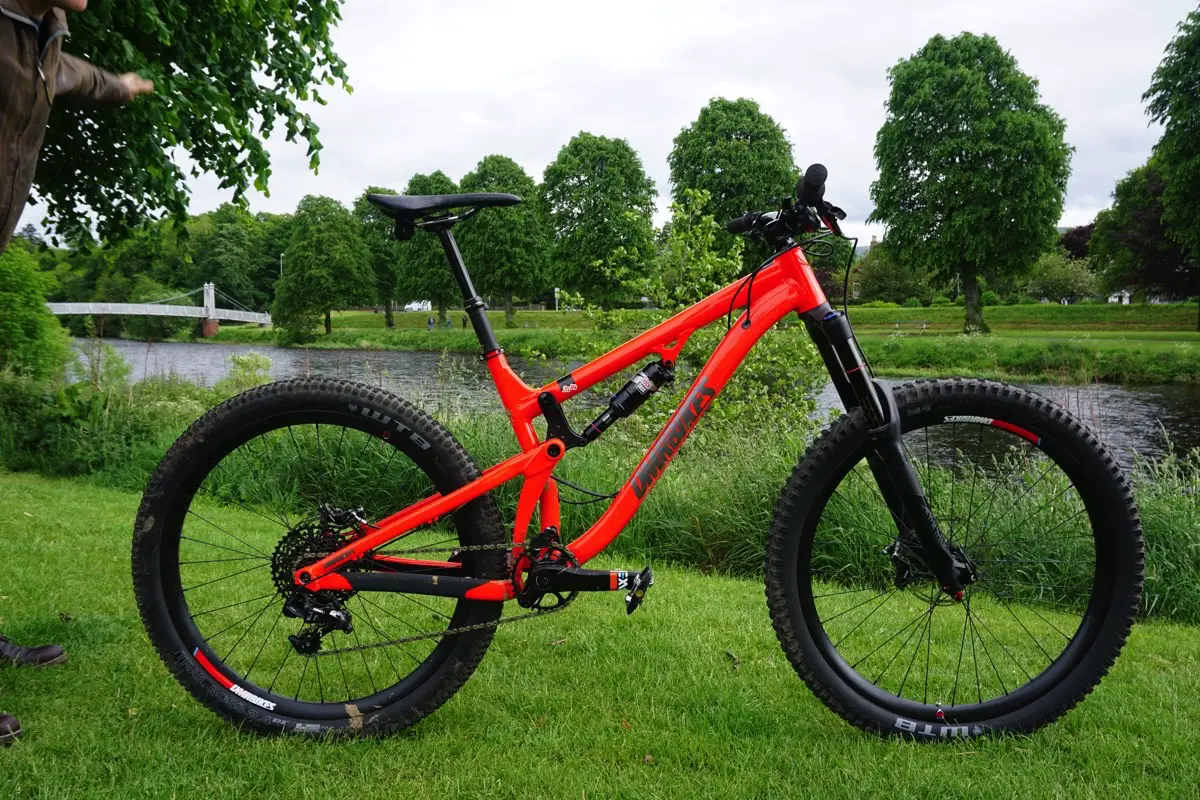
DMR Sled Features
- 6061 series alloy frame
- 160mm rear travel travel
- ‘Orbit Link’ virtual pivot suspension design
- RockShox Monarch RT3 Debonair shock
- Collet style main pivot hardware
- 27.5in wheels
- Rated for 160-180mm fork travel
- 65.5° head angle (w/160mm travel fork)
- 430mm chainstay length
- Syntace 148x12mm thru-axle
- 73mm threaded bottom bracket
- Internal front triangle routing
- Clearance for up to 2.5in tyres
- Colours: Metallic Black or InfraRed
- Sizes: Small, Medium, Large, X-Large
- Frame RRP: £1599 (w/RockShox Monarch Shock)
- Bike RRP: £3500
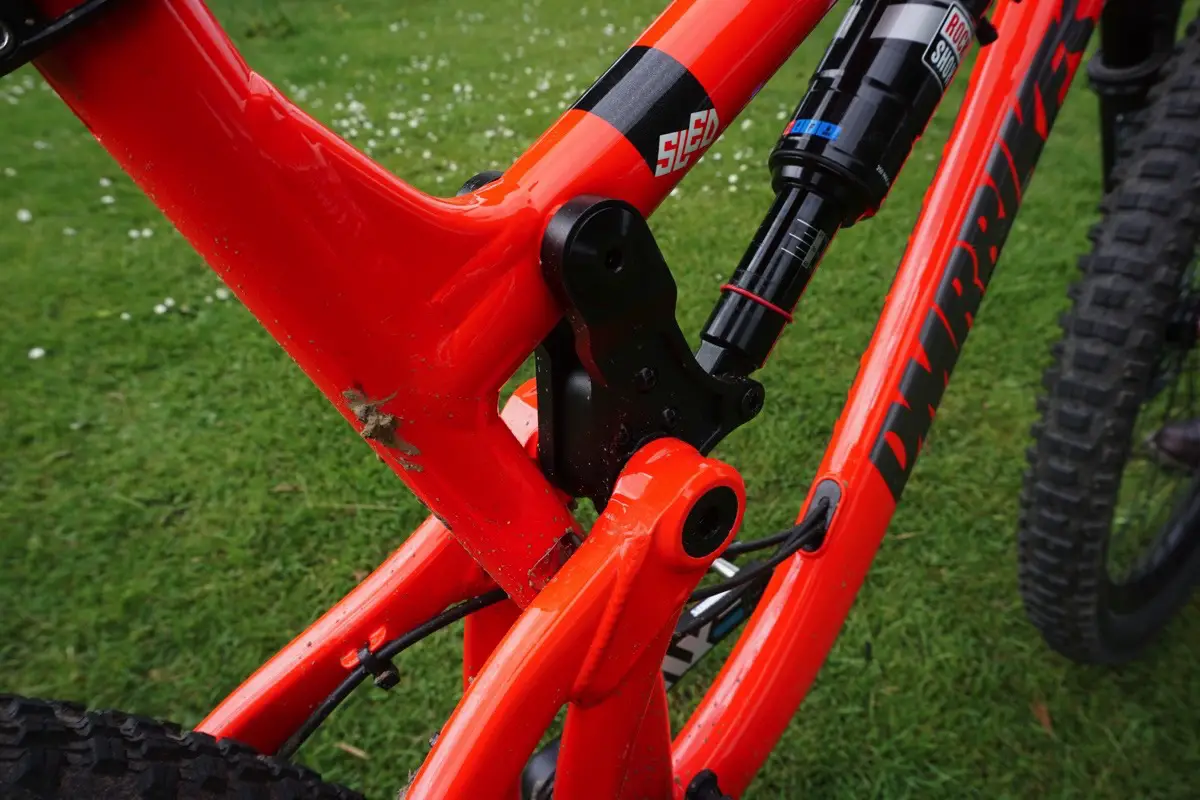
Built from alloy instead of steel, the DMR SLED cuts a very purposeful and chunky profile that just looks brutish. Massive pivots, sealed cartridge ball-bearings and chunky linkages give off the vibe that this is a bike built for a’punishin under some pretty rough riding conditions.

The SLED is built around 27.5in wheels, and it’s equipped with 160mm of travel at the rear, with the capability of fitting a 160-180mm travel fork. It’s aimed at the popular enduro segment, but DMR was keen to offer a bike that wasn’t just focussed on racing, but rather all mountain thrashing too.
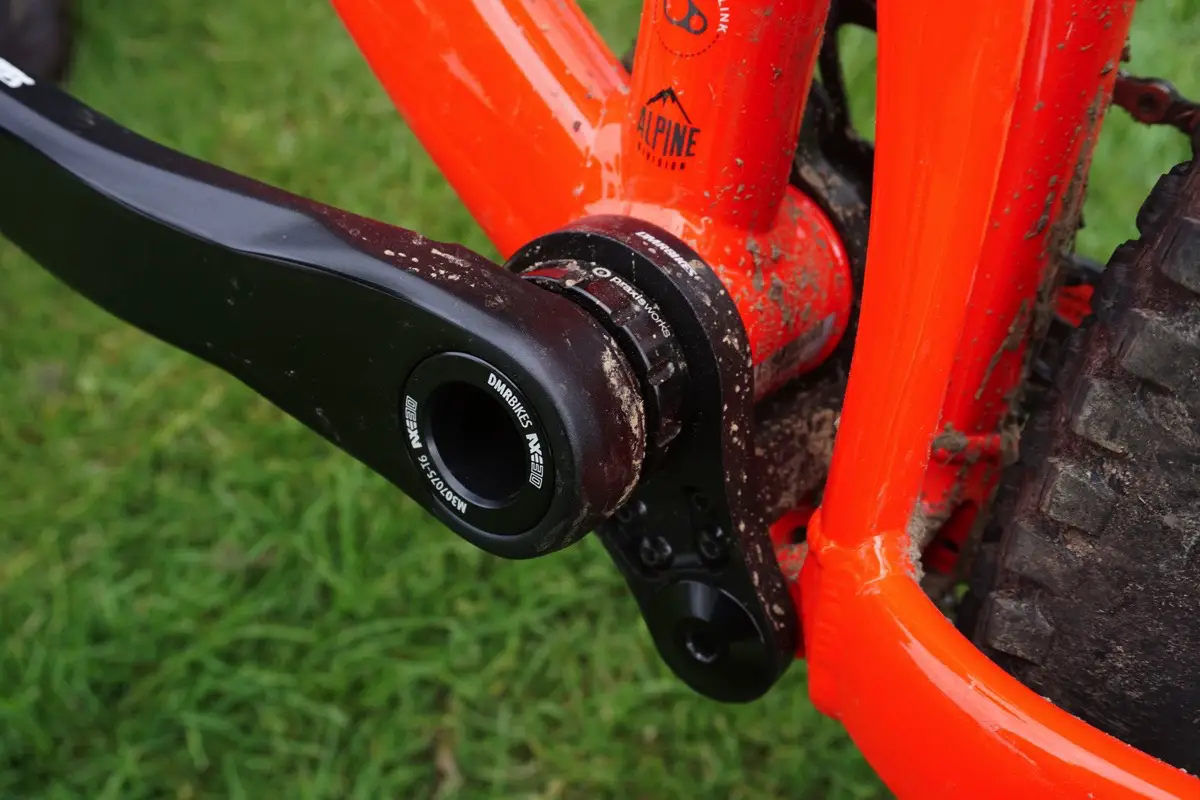
To deliver that 160mm of rear wheel travel, DMR has developed its own pivot system called the Orbit Link. Designed in conjunction with Dave Earl of VPP and Switch suspension fame, the Orbit Link is essentially a virtual pivot design that shares some similarities with the VPP platform you’d see on a Santa Cruz bike. Where the design differs however, is in the lower link, which rotates around the bottom bracket shell. DMR has built the lower link from alloy, and it slides around two huge cartridge bearings to keep things stiff. If you want a good visual of how it works, head to the SLED page on the DMR website.
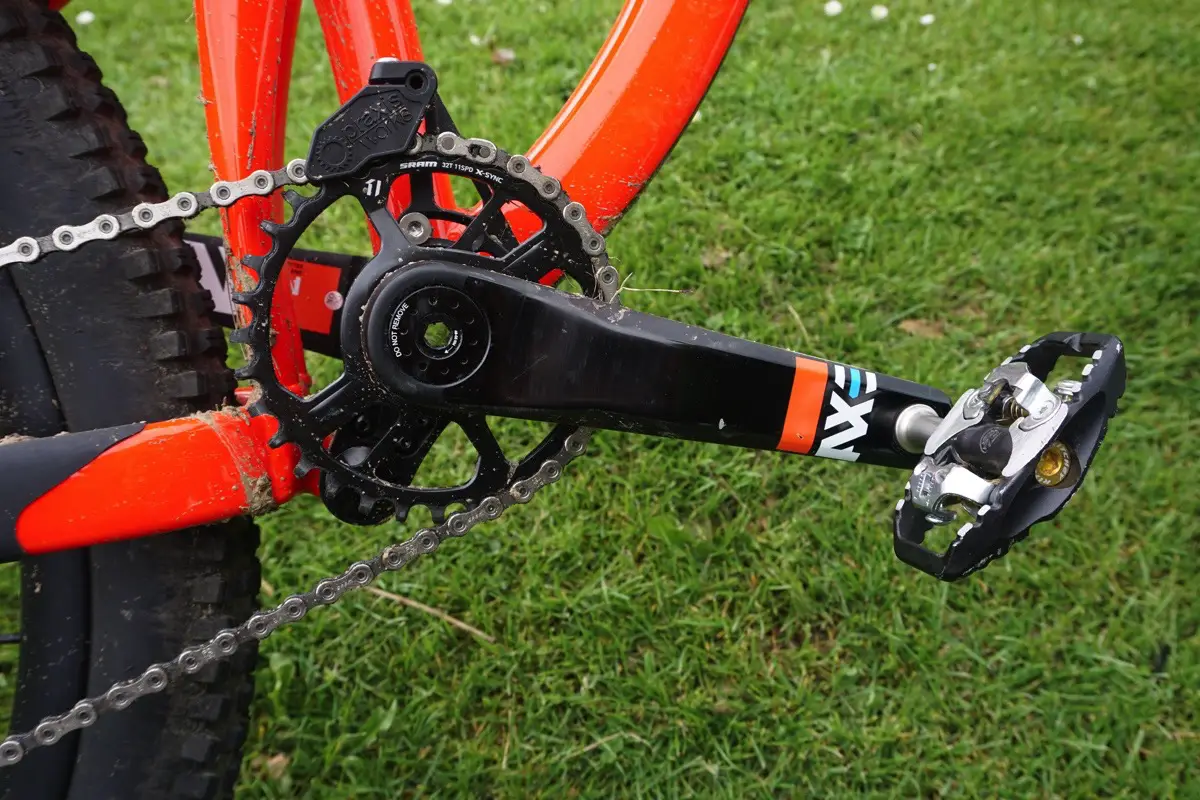
On our test bike, there’s a load of DMR components used to kit out the SLED frame, including the popular Axe M30 cranks. Using a 30mm alloy spindle, these tough hollow alloy crank arms use a direct-mount chainring design and are built to work with a Praxis Works threaded bottom bracket.
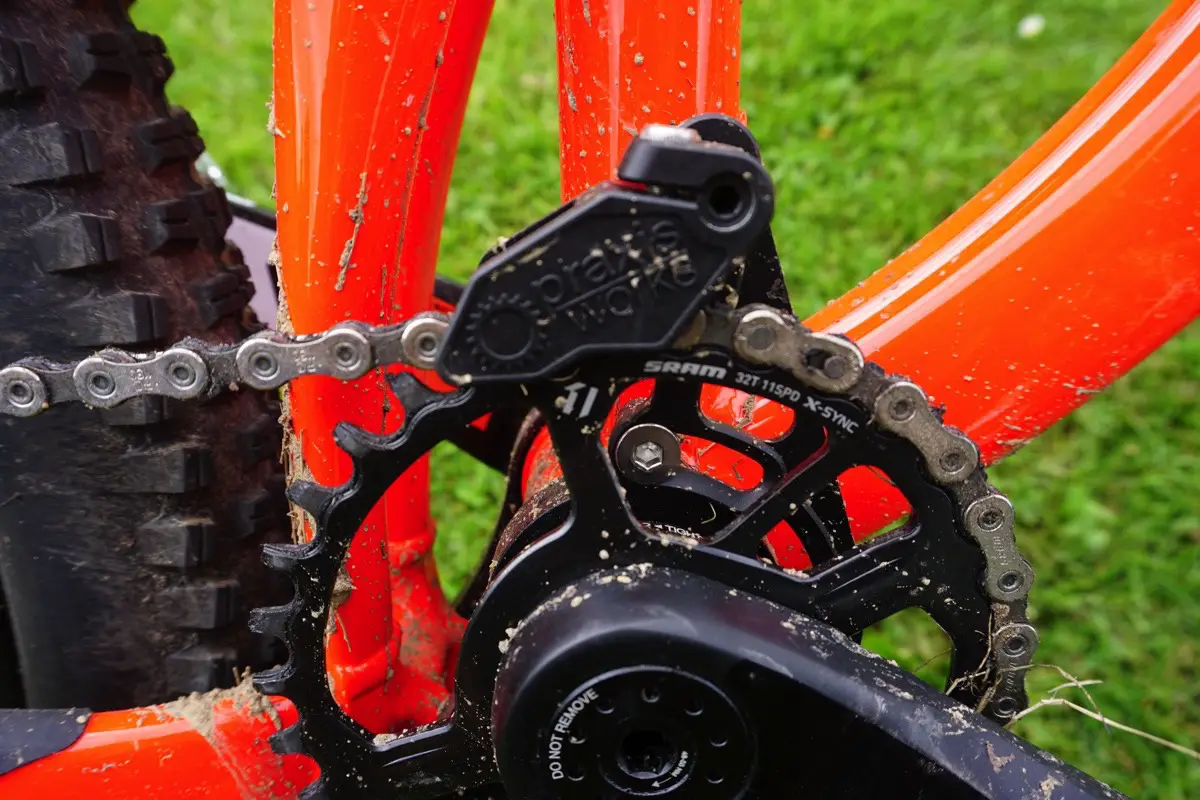
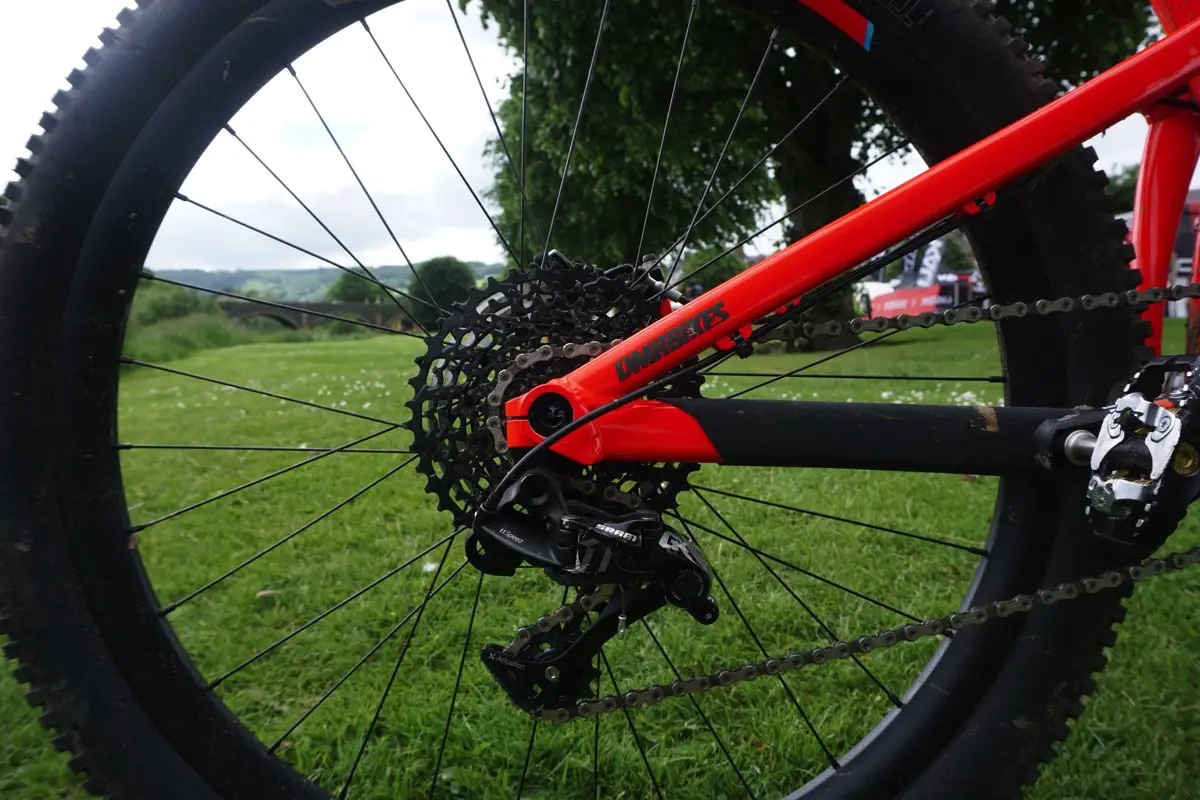
The rear dropouts are Boost 148x12mm, with a Syntace 12mm thru-axle locking down the rear wheel. There’s a replaceable derailleur hanger that is designed with a breakaway mounting bolt that will (hopefully) break before the mech or frame does. Gearing is a 1×11 drivetrain from SRAM, with a GX rear derailleur and shifter doing the clicky-click together.
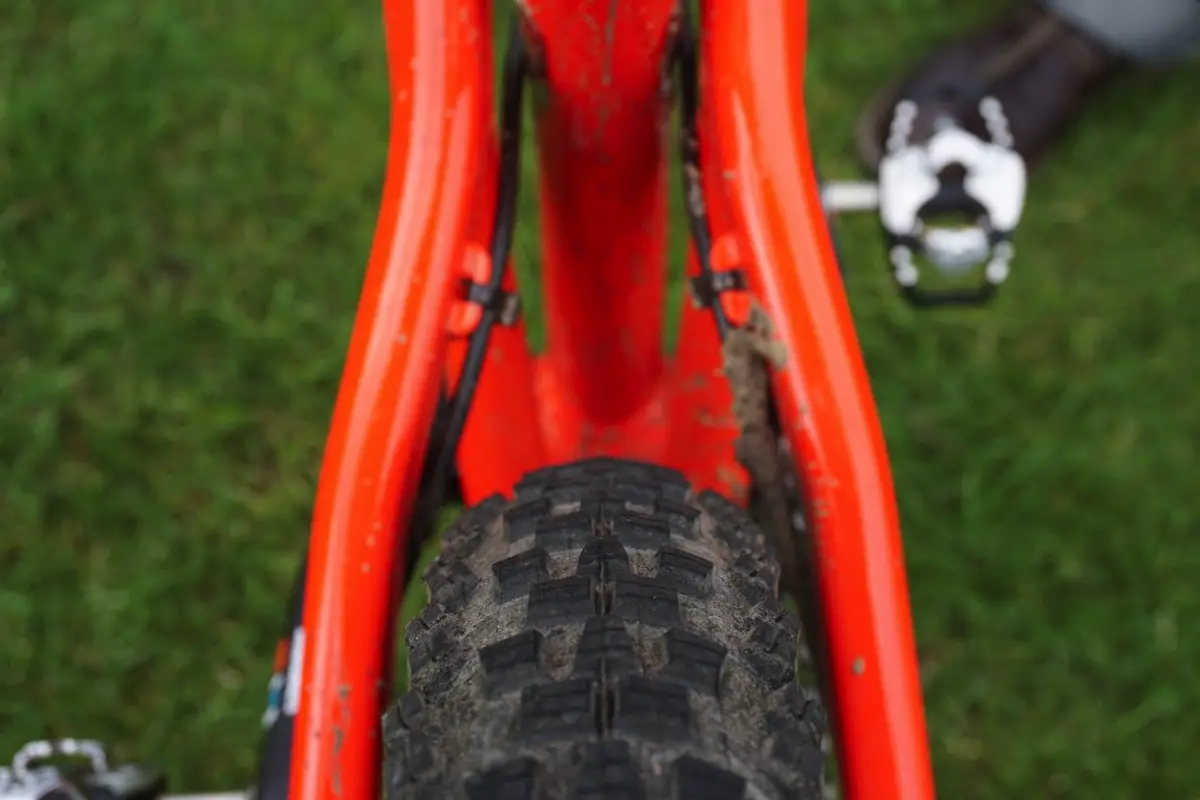
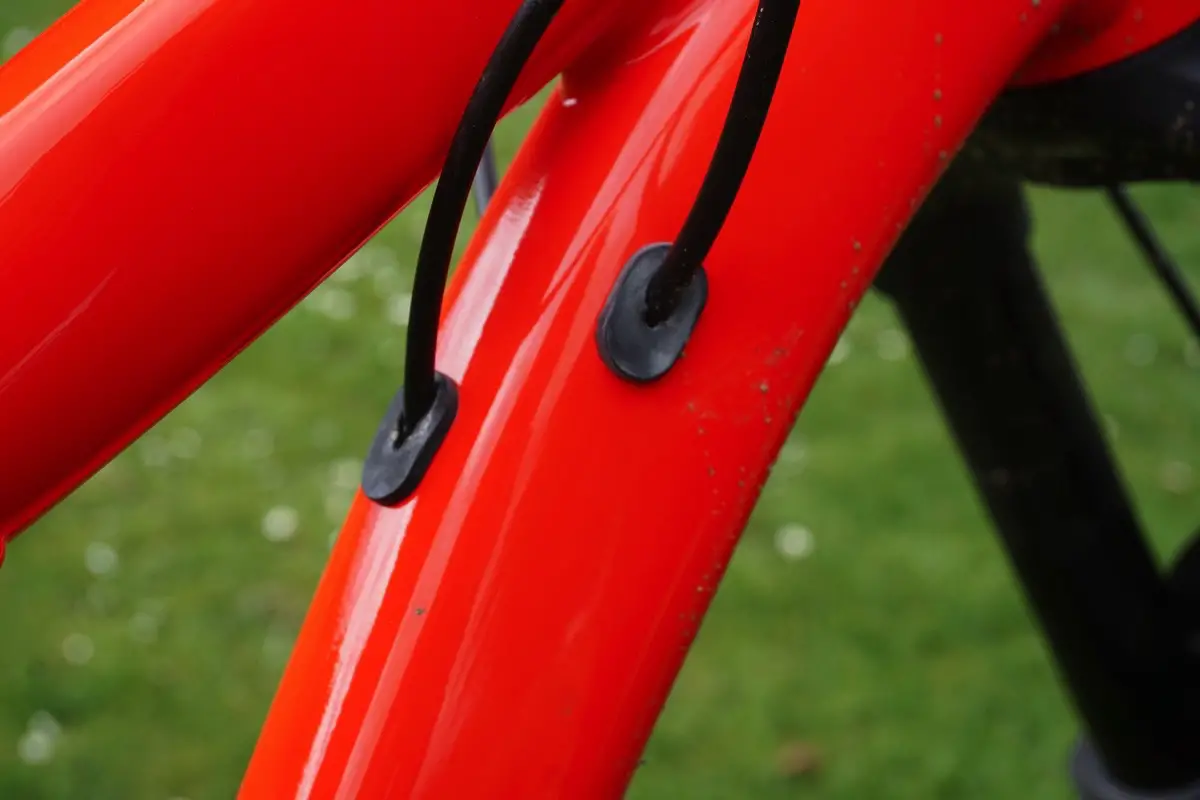
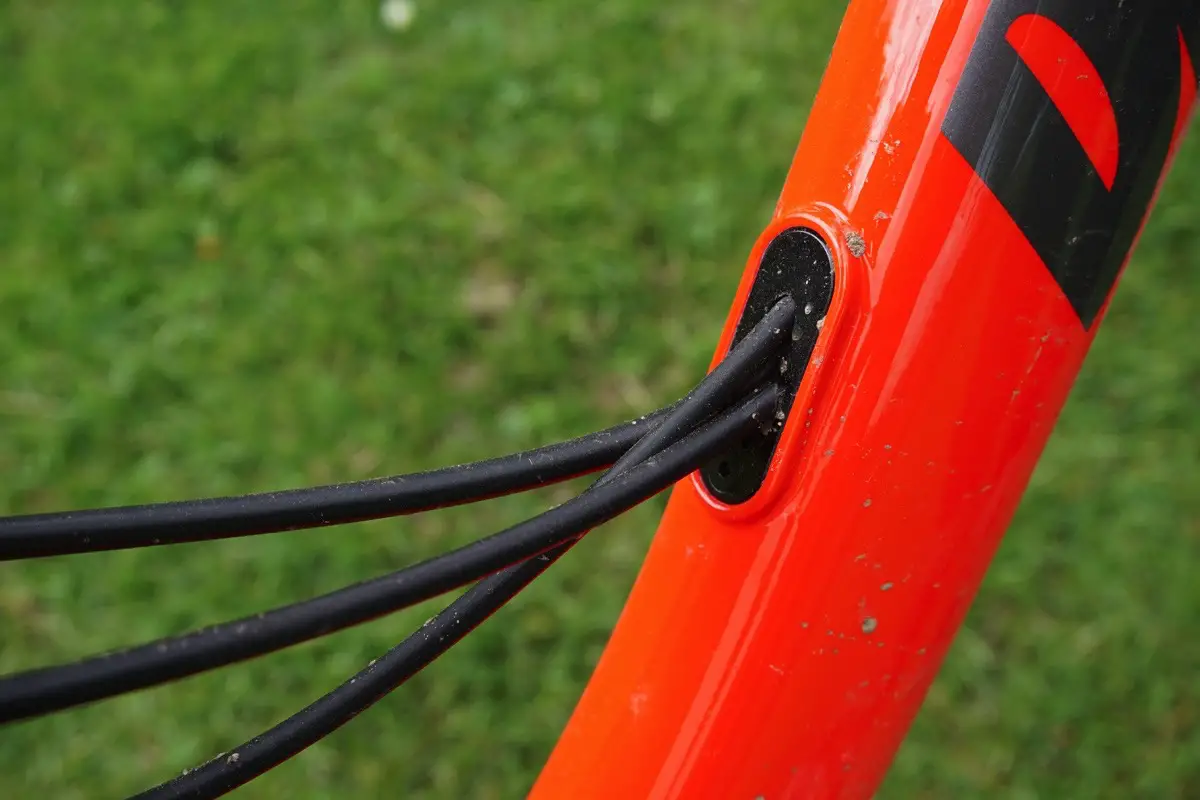
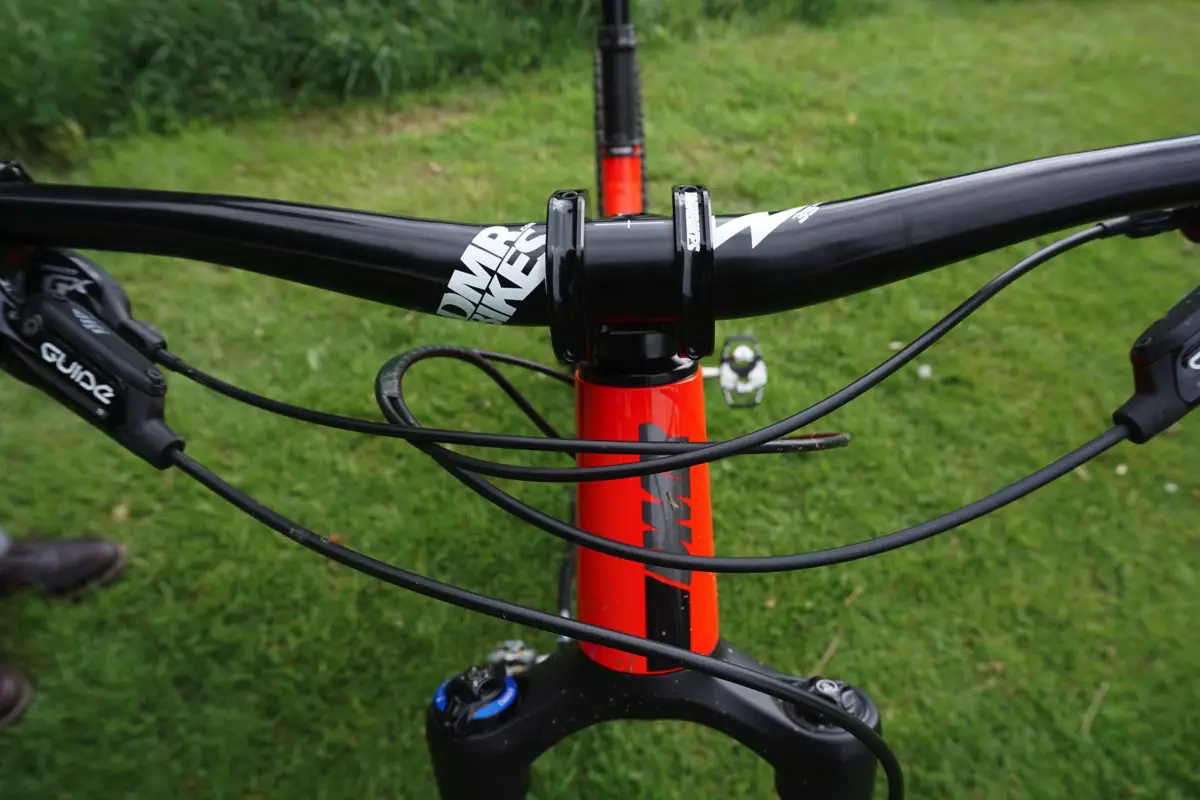

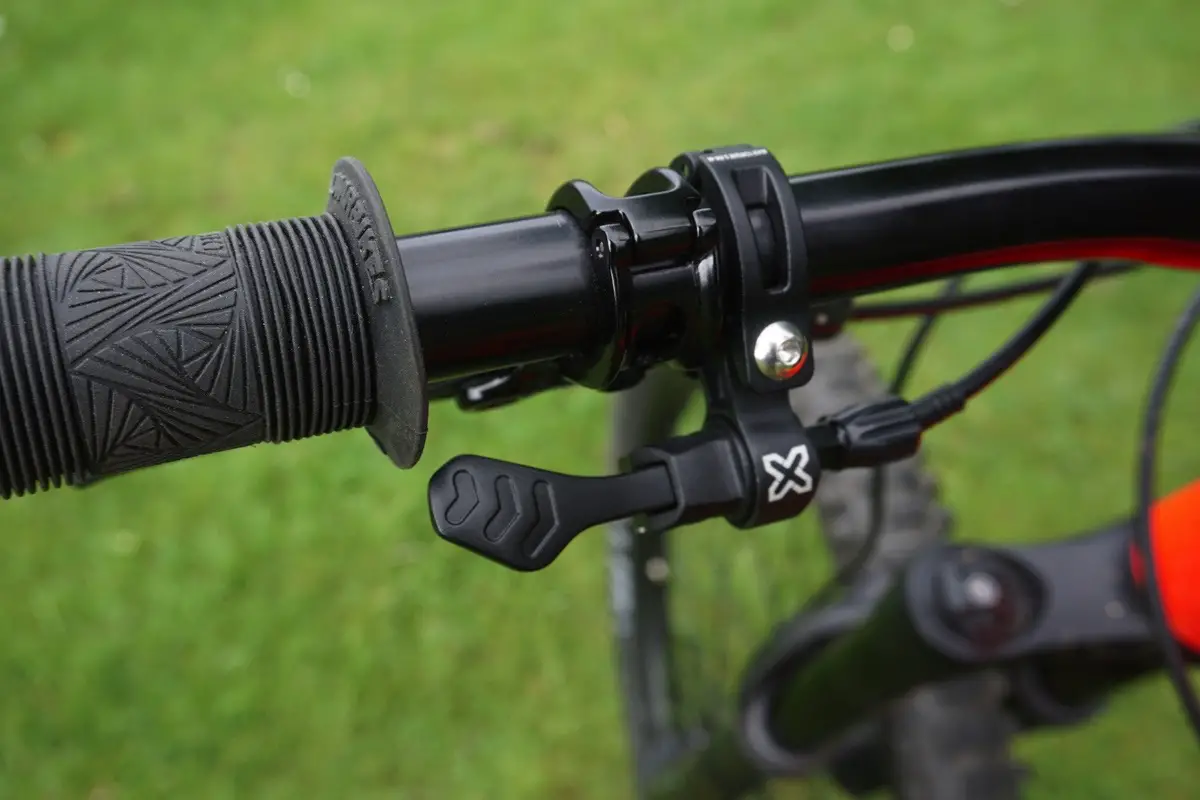
DMR has made a few changes to the SLED’s build kit for us to test, which includes the new X-Fusion Manic dropper post that became available earlier this year. The remote is a new design for X-Fusion, and uses a larger profile paddle to reduce pressure on the thumb each time you hit it.
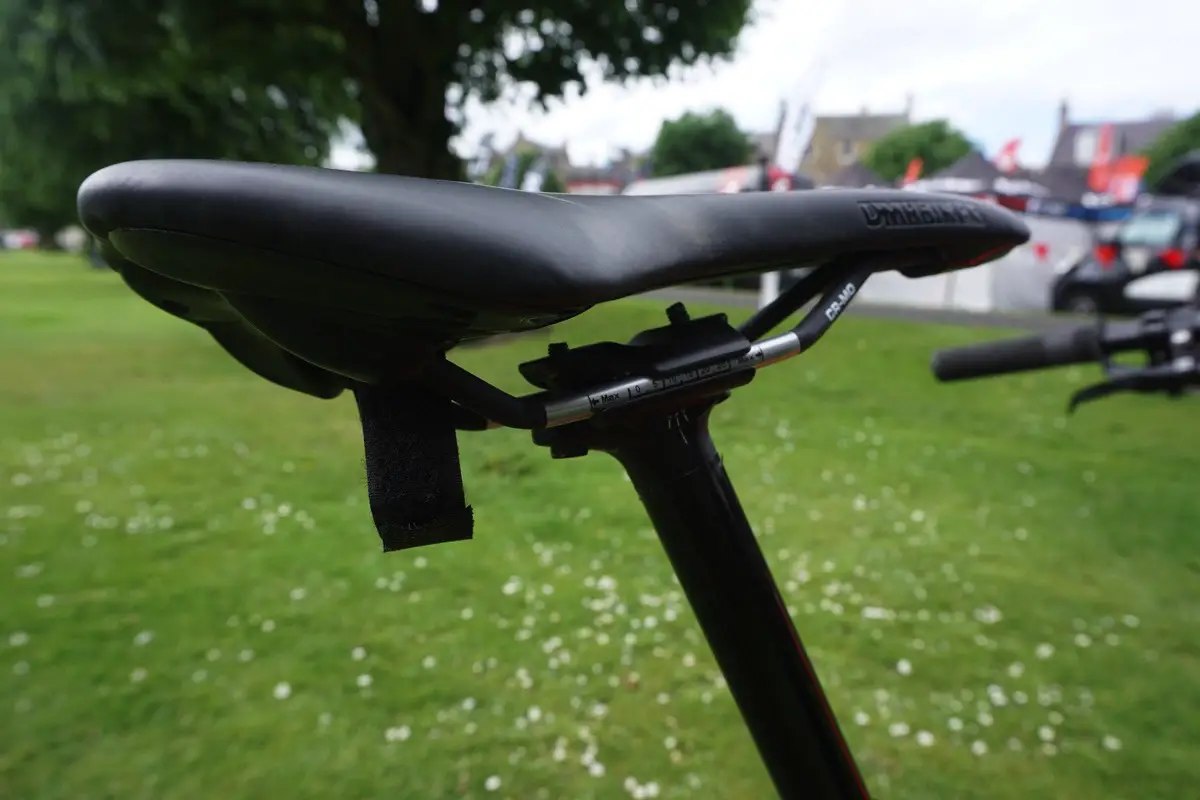
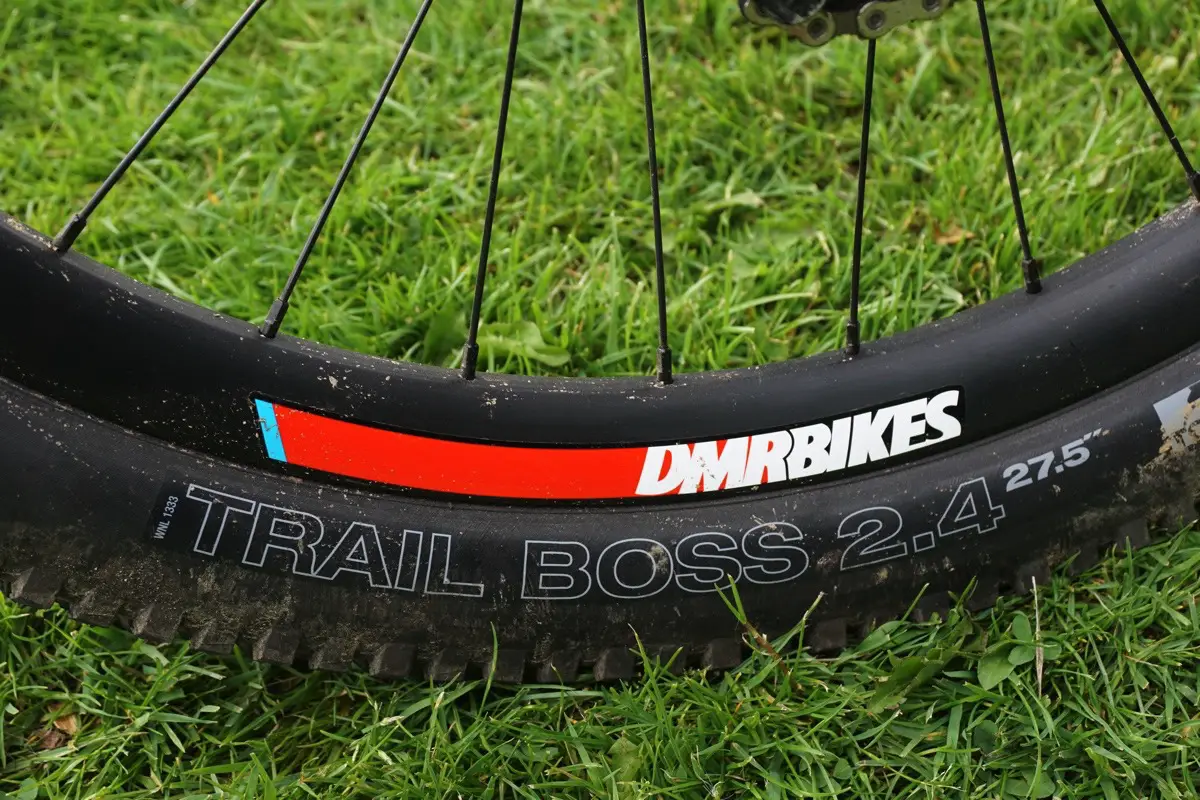
Wheels also come from the DMR stable. These are the Zone wheels, which use sealed cartridge bearing hubs, a 6-pawl freehub mechanism, and alloy hub shells that are laced conventionally to chunky alloy rims. The tubeless compatible rims get a 24mm internal width, and DMR claims the wheelset weighs around 1830g for the pair. They’re shod with WTB rubber, with a fast-rolling 2.4in wide Trail Boss on the back, and a chunky Convict 2.5in wide tyre on the front.
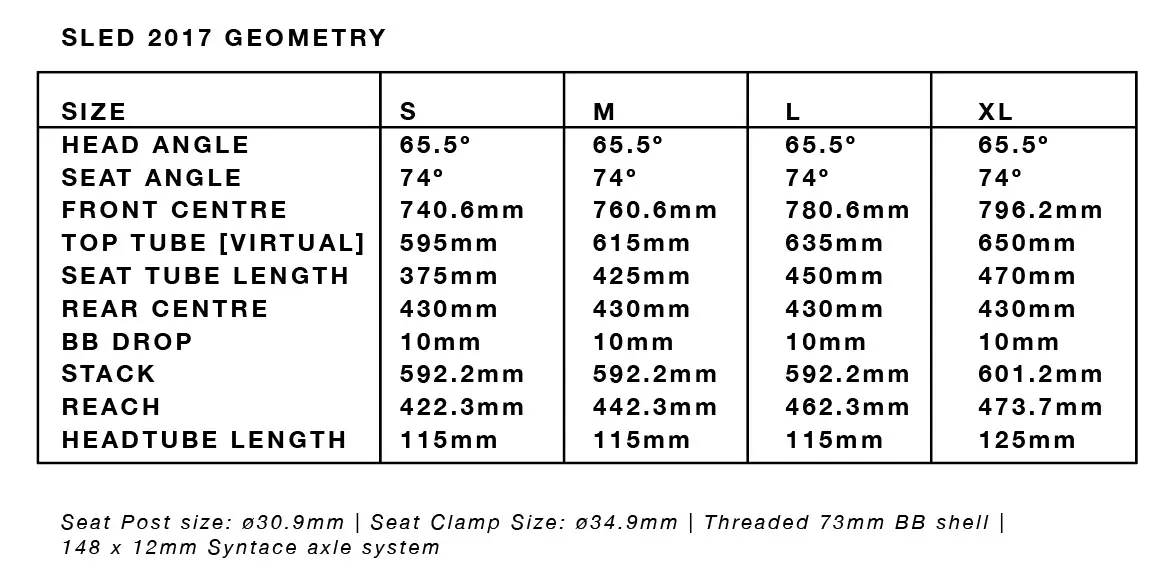
Geometry on the SLED has been geared towards technical alpine riding, with a slack 65.5° head angle combined with generous reach measurements across the board to keep the front end long and stable. Thanks to the Boost drivetrain offset, DMR has been able to keep the rear centre short for responsive handling, with a 430mm chainstay length. And alongside the 1x specific frame, that’s allowed DMR to build in clearance for up to a 2.5in wide rear tyre.
We’ll be putting the DMR SLED to the test under our enduro-bro test riders from the Singletrack office, and we’ll have a full review coming for you in the near future. Want to know more about the bike? Then the DMR Bikes website is your friend.
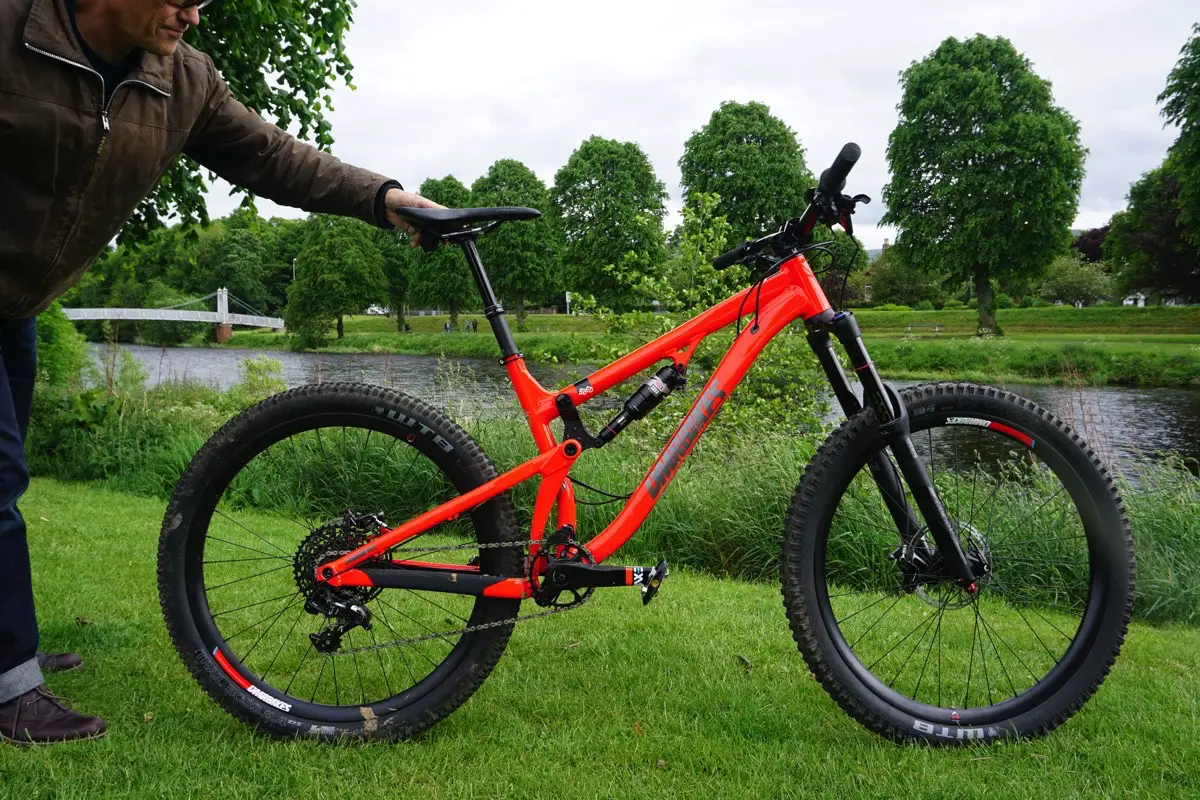
DMR SLED Specifications
- Frame // Custom 6061 aluminium tubeset, 160mm Travel
- Fork // Rockshox Lyric RCT3, 170mm Travel
- Shock // Rockshox Monarch
- Hubs // DMR Zone, 110x15mm Front & 148x12mm Rear
- Rims // DMR Zone, Tubeless Ready
- Tyres // WTB Convict TCS Light 2.5in Front & Trail Boss 2.4in TCS Light Rear
- Chainset // DMR Axe M30, 170mm
- Chain Device // Custom Praxis Works Upper Guide
- Front Mech // N/A
- Rear Mech // SRAM GX 11-Speed
- Shifters // SRAM GX 11-Speed
- Cassette // SRAM XG1150, 11-42t, 11-Speed
- Brakes // SRAM Guide R, 180mm Front & Rear
- Stem // DMR Defy 35mm Long
- Bars // DMR Wingbar MK3 Alloy, 800mm Wide, 20mm Rise
- Grips // DMR Sect Grip
- Seatpost // X-Fusion Manic, 125mm Travel
- Saddle // DMR Stage 1
- Size Tested // Medium
- Sizes available // Small, Medium, Large, X-Large




